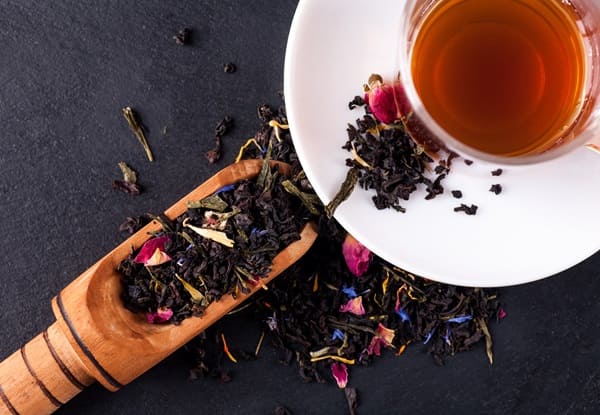Tea is one of the best-known non-alcoholic beverages with beneficial properties for human health. Depending on the different processes used for its production, Camellia sinensis is made into six different types of tea.1:
- White tea
- Green tea tea
- Yellow tea
- Oolong tea
- Black tea
- Dark tea
Tea quality analysis
Metabolic science (the science responsible for identifying and quantifying relevant end products – Metabolic changes– expression of a gene) used in tea has made exponential progress over the past decade. This is mainly due to the inextricable relationship between the presence and quantity of key metabolites with differences in each type of tea, considering the quality and reliability of tea.
Taking a cue from black tea, native to China’s Fujian province2It is one of the most consumed in that country (75%) and worldwide, and has been identified as containing bioactive compounds beneficial to human health, including phenols, amino acids and alkaloids.3.
Furthermore, its chemical composition is directly related to its geographical origin and the different types and processing techniques used in each production pole, which helps us to consider what are the fundamental factors that determine its quality.
Benefits of black tea
Two basic elements to retain in the classification of black tea are:
- Pure black tea is obtained from the leaves and buds of two types of plants: Camellia sinensis was Chinese First China and Camellia sinensis was Assamica Originally from India. This means that although it can be grown and cultivated in other places, these varieties have evolved there and adapted to different regions.
- To obtain black tea, a withering process is followed, followed by breaking the fibers and creating their oxidation, rolling and drying the camellia sinensis.
Returning to the example of black tea from China, it is divided into three types according to its presentation: gongfu style (congo), smoked (chauchong) and compressed (brick tea).
Other categories of black tea are the fibers broken down into whole leaves, CTC (crush, tear and curl), fan (pieces obtained after grinding the fibers) and dust (finely ground, designed for tea bags or pouches).

You may also be interested in: Expansion of Tea Market in Latin America: Opportunities and Challenges to 2024
A current challenge is reliability of tea
Congo black tea is made from an integrated process that includes withering, steeping, fermentation and drying.4.
Differences in variety and processing methods give black tea different sensory characteristics. For example, Anhui black tea has volatile elements, with hints of flowers, fruits and honey, while Yunnan black tea is characterized by strong floral notes and Assam black tea is characterized by malt aromas and roses.5.
Considering all these various sensory virtues, consumers are willing to pay more to taste these unique flavors found in black tea, which is encouraging in tandem with increasing fraud in the tea market. as teas Camellia sinensis was sinensis Y Camellia sinensis was Assamica Processed by high commercial value Congolese and/o CTC methods6.

Science beyond the tea industry
As with Mexico, the quality, identity and authenticity of national spirits such as mezcals and Mexican wines are beginning to be identified and measured.7From 2023, “molecular fingerprints” associated with the origin, type and type of tea process will begin to be obtained from:
- Chinese regions such as Anhui, Yunnan, Fujian and Guangdong
- India Darjeeling and Assam
- and Sri Lanka, like Kandi black tea
All these examples are known for their high commercial value8It is based on deep learning, combining high-resolution analytical techniques and multidisciplinary statistical analysis with artificial intelligence-based algorithms.
It has been unequivocally proven that the geographical origin of black tea can be identified and measured by their caffeine – alanine – lysine – aspartic acid – serine – tyrosine profiles according to the effect of variety, process and climate respectively; succinic acid – theaflavin digalate – malic acid and beta glucose – sucrose.
Hence, it has been proven possible to combine artificial intelligence with cutting-edge agri-food technology to develop a fraud control model in teas for the benefit of consumers and industry alike.
Be sure to check out: Coconut Water and Matcha Tea, New Emerging Trends in the Beverage Market
Notes
- Cai, H.; Zhang, Z.; Li, Z.; Zhang, X.; Fu, H.; Yang, P.; Zhang, L. Metabolism in quality formation and characterization of tea products: a review. International Journal of Food Science and Technology (2022), 57, 4001-4014.
- Yao, SS; Guo, WF; Lu, Y.; Jiang, YX Flavor characteristics of Lapsang Souchong and Smoked Lapsang Souchong, a special Chinese black tea with pine smoking process. Journal of Agricultural and Food Chemistry (2005), 53, 8688-8693.
- Zhang, L.; Ho, CT; Zhou, J.; Santos, JS; Armstrong, L.; Granado, D. Chemical and processed biological activities Camellia sinensis Tees: A Comprehensive Review. Comprehensive reviews of food science and food safety. (2019), 18, 1474-1495.
- Zhu, K.; Ouyang, J.; Huang, J.; Liu, Z. Research progress on black tea terubicins: a review. Critical Reviews of Food Science and Nutrition. (2021), 61, 1556-1566.
- Yun, J.; Cui, C.; Zhang, S.; Zhu, J.; Peng, C.; Cai, H.; Yang, X.; Hou, R. Application of headspace GC/MS combined with chemical analysis to identify the geographical origin of black tea. Food Chemistry. (2021), 130033.
- Medina, S.; Pereira, JA; Silva, P.; Perestrelo, R.; Camara, JS Food fingerprints- a valuable tool to monitor food authenticity and safety. Food Chemistry (2019), 278, 144-162.
- Lopez Aguilar, R.; Zuleta-Prada, H.; Hernandez-Montes, A.; Herbert-Pucheta, JE Comparative NMR metabolomics profiling between Mexican ancestral and artisanal mezcals and industrialized wines to distinguish geographic origin, agave cultivars or grape varieties, and production processes as a function of their quality attributes. foods. (2021), 10, 157.
- Cui, C.; Xu, Y.; Jin, G.; Chong, J.; Peng, C.; Cai, H.; Hou, R. Applications of machine learning to identify the geographical origin, type and processing of black tea using 1H NMR chemical fingerprinting. diet. (2023), 148, 109686
